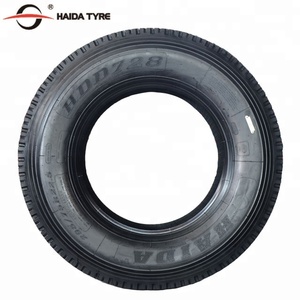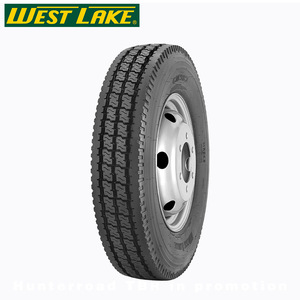11r24.5 tires
(11493 products available)






Wholesale Good Quality Semi Commercial Truck Tire 295/75r22.5 295/75/22.5 11R22.5 11R24.5 With DOT and SMARTWAY






12.00r20 11.00r20 11r22.5 385 65r22.5 13r22.5 Cheap China Radial TBR Truck Tires 315/80r22.5 Tires for Trucks 1200r24






11r22.5 11r24.5 295/75R22.5 295 80 22.5 Commercial Trailer Truck Tire Quality Tires for Sale






JOYALL JOYUS GIANROI Brand Truck Tyre A876 11R22.5 11R24.5 295/75R22.5 285/75R24.5 12R22.5 295/80R22.5 315/80R22.5






12.00r24 13r22.5 315/80r22.5 385/65r22.5 Block Pattern 11r 22.5 Truck Tires 1100 20 Heavy Duty Truck Tire






Certified Tires for Trucks 295 75 22.5 16 Ply 29575R225 11r22.5 11r 225 11R24.5 255 70 225 Truck Tires 295 75 22.5






Cheap Tires Wheels Tires for Trucks 11r22.5 Llantas 11r24.5 295/75r22.5 Semi Truck Tyres 11/r22.5 295 75 R22.5






Truck Tires Heavy Duty BEST QUALITY 11R22.5 11R24.5 205/75R17.5 235/75R17.5 245/70R19.5 255/70R22.5 295/75R22.5radial Truck Tire
Popular in your industry






China Truck Tires Commercial Truck Wheels 11 R 22.5 11r24.5 Tires for Truck 12r22.5 13r22.5 for All Position






Hanksugi Tire, New Tires Bulk Wholesale 11r22.5 11r24.5 for Africa and Asia Market






Made in China High Wear-Resistance 11R22.5 12R22.5 11.00R20 295/80R22.5 315/80R22.5 11R24.5 Tubeless Truck Tires





Private Label Brand New Car Tyres Manufacturers Commercial 11r22.5 11r24.5 Accessories Automobile Tire






Doublestar Roadone Double 295/80r22.5 11r24.5 11r22.5 385/65R22.5 13R22.5 315 80 22.5 Truck Tires for EU Africa






Competitive Price Snow Tire 295/75R22.5 Truck Tires 11R22.5 Winter Snow Truck Tires





WHOLESALE SEMI TRUCK TIRES 11R22.5 295/75R22.5 11R24.5 285/75R24.5 R22.5 R24.5 STEER DRIVE TRAILER 255/70R22.5




HUASHENG TAITONG KAPSEN Brand All Steel Radial Tyre TBR Tyres 11R22.5 11R24.5 205/75R17.5 with Warranty






DOT Certified Vietnam Thailand Truck Tires 295 75 22.5 11R22.5 11R 24.5 Commercial Truck Tires Semi Truck Tires






Winter Snow Truck Tire 11r22.5 11r24.5 295/75r22.5 315/70r22.5 315/80r22.5 Heavy Duty Truck Tire






KTHD3 Mid-East Africa Hot Sale High Quality TBR Made in China Truck Tyre Tires Good Price Drive 11R22.5 11R24.5 295/75R22.5






Best-selling Used Heavy Truck Tire 295/75r22.5 11r22.5 at Reasonable Prices Tyre Wholesale China Tire






Heavy Truck Tires 11R22.5 11R24.5 Truck Tires 295/80R22.5 Truck Tires 22.5






Best Sell Vietnam Trailer Tire and Rim 255 70 22.5 11/22.5 11r24.5 295/75r22.5 315/80r22.5






Wholesale New Tubeless Semi Tires 295/75R22.5 11R22.5 11R24.5 Radial Tyres for Heavy Commercial Vehicles Accessories Wheels






High Quality 11R22.5 11R24.5 11R24.5-16 Truck Tyre Radial Heavy Truck Tires for Sale






Heavy Duty Truck Tires 315/70R22.5 11r 22.5 Tires 11r22.5 275 / 70 R22.5 275/70r22.5






High Quality Radial Truck Tire Heavy Duty Tires 11r24.5 Heavy Truck Tire All Brand of Truck



WestLake Goodride Chaoyang Brand CM983 10.00R20 11R22.5 295/75R22.5 11R24.5 TBR Bus Tyre All Steel Radial Truck Tires






Cheap Rubber Truck Tire 295/80R22.5 315/80R22.5 385/65R22.5 11R22.5




GOODTRIP brand new truck tires commercial tires made in Cambodia 295/75R22.5 11R22.5 11R24.5 285/75R24.5 255/70R22.5 drive






New 11 24.5 16pr 11r 22.5 16pr 12r22.5 18 Tubeless Branded Ruedas Truck Tires with Japan Tech Germany Machine




Truck Tire 295 75r22 5/(Factory Direct) Commercial Truck Tire 295_75_22.5 11r22.5 11r24.5 16 Ply Drive






Anniate Amberstone Truck Tire 11r22.5 11r24.5 295/75r22.5 Wholesale Price Tbr Tires Commercial Tyre






TBR Tyre Thai Truck Tires 11r22.5 11r24.5 295/75r22.5 215/75r17.5 235/75r17.5 245/70r17.5 225/70r19.5 Bus Truck Made in Thailand
Top categories
About 11r24.5 tires
Types of 11r24.5 tires
There are several types of 11r24.5 tires for different applications and driving needs.
-
All-position tires
As the name suggests, all-position tires can be used on all wheel positions, including the front, rear, and trailer axles. They offer balanced wear and are ideal for long-haul trucks that require uniform handling and stability across all positions. These tires are versatile and can be used in various applications and road conditions, such as highways, urban roads, and off-roads. For this reason, they are popular among truck fleet managers and owner-operators who prefer to use the same tires on all wheel positions to reduce the inventory. Some of the 11r24.5 all-position tires include the Continental HSC 3 and Michelin X Multi Energy Z.
-
Drive tires
Drive tires are mainly fitted on the drive axle of trucks and buses. They are designed to provide good traction and drive power. For that reason, they have aggressive tread patterns and durable rubber compounds that improve grip and increase mileage. They are ideal for long-haul trucks and regional trucks that do a lot of pickup and delivery work. Besides, they perform exceptionally well in on-road and off-road conditions, such as wet, muddy, and snowy roads. This makes them suitable for applications such as construction, mining, and logging. Some 11r24.5 drive axle tires include the Goodyear Fuel Max RIB and the Yokohama 101Z.
-
Steer tires
Steer tires are fitted on the steering axle of trucks and buses. They are designed for precise steering control, stability, and good braking performance. This makes them ideal for highway and long-distance travel. However, they are also suitable for applications that require high-speed performance and good load-carrying capacity, such as freight and express delivery. The 11r24.5 steer tires feature a symmetric tread pattern that wears evenly and promotes uniform tire performance. They also have a solid shoulder design that increases grip and stability during cornering. This makes it possible to use them on rural roads, city roads, and off-road conditions. Some of the 11r24.5 steer tires include the Michelin XZA 3D and the Bridgestone R197.
Specification and maintenance of 11r24.5 tires
-
Pressure
Maintaining the correct tire pressure is essential for 11r24.5 semi tires. Underinflation can cause heat buildup and tire failure, while overinflation can lead to uneven tread wear and a harsh ride. To determine the proper inflation level, check the vehicle's placard or consult the tire manufacturer's specifications. Use a high-quality pressure gauge to obtain accurate readings. Check the tire pressure before and after each trip, at least once a week. Tires should be cold when measuring the pressure. This means the vehicle hasn't traveled more than 1.6 kilometers (1 mile) or that the tires have been stationary for at least four hours. Inspect the sidewalls and tread for punctures, cuts, or other damage that could affect tire performance. If the tire suffers a sidewall damage, it must be replaced.
-
Tread depth
Tread depth is crucial for maintaining traction and safety, especially in wet or slippery conditions. In most countries, a tread depth of 1.6 mm (2/32 inch) is the legal minimum. However, it's advisable to replace tires before reaching this limit for optimal performance. Use a tread depth gauge or the penny test to measure the tread depth. Insert a US penny into the tread grooves with Lincoln's head facing down. If part of Lincoln's head is visible, the tires need replacement. Regularly inspect the tires for uneven wear patterns, which could indicate alignment or suspension issues. Rotate the tires every 6,000 to 8,000 miles (approximately 9,500 to 12,900 km) or as recommended by the vehicle manufacturer. This ensures even tread wear and extends tire life. When replacing tires, use tires of the same size, type, and brand on all wheels. Mismatched tires can affect handling, traction, and overall vehicle performance. Consult a professional tire dealer or the vehicle manufacturer if unsure about the appropriate tire specifications.
In addition to regular inspections, the following precautions should be taken:
- 11r24.5 tires for sale should be stored in a dry, cool, and well-ventilated area, away from direct sunlight and heat sources.
- They should be kept away from chemicals, oils, and solvents that can damage the rubber compound.
- When storing tires, keep them clean and free of debris. Follow the manufacturer's recommendations for long-term storage.
By adhering to these specifications and taking proper care of the 11r24.5 tires, drivers can ensure optimal performance, safety, and longevity.
How to choose 11r24.5 tires
When choosing a proper 11r24.5 truck tire, consider the following factors:
- Load capacity: Each type of 11r24.5 tire has its standard load capacity. When selecting a tire, ensure that its load capacity matches or exceeds the weight that will be transported. This ensures that the tire is not overloaded, thus preventing damage and increasing safety.
- Road conditions: It is important to consider the type of road condition or terrain when selecting a tire. For example, if the truck will be driven on muddy or off-road terrain, obtaining all 11r24.5 tires with superior grip and all-terrain capabilities is recommended.
- Weather and climate conditions: Weather conditions also play a crucial role in tire selection. For example, in regions with heavy winter snow and ice, it is crucial to use tires specifically designed for winter conditions. These types of tires provide better grip and braking performance on slippery surfaces.
- Tread pattern: The 11r24.5 tire's tread pattern is another important consideration when choosing a tire. Different patterns offer other performance characteristics, such as on-road grip, off-road capability, and tire noise. It is recommended to select a tread pattern that fits the required driving conditions and preferences.
How to DIY and Replace 11r24.5 tires
Replacing 11R24.5 tires can be a complex task that requires specialized tools and knowledge of tire safety protocols. Here’s a step-by-step guide on how to replace the tires:
-
Preparation
Park the vehicle on a flat, stable surface and engage the parking brake. Gather all necessary tools, including a tire iron, jack, jack stands, new 11R24.5 tires, and wheel chocks. Deflate the old tire completely and remove the wheel covers or hubcaps, if necessary.
-
Loosen the Lug Nuts
Use the tire iron to loosen the lug nuts while the wheel is still on the ground. Turn the lug nuts counterclockwise but do not completely remove them at this stage.
-
Jack Up the Vehicle
Place the jack under the vehicle's designated jacking points and lift the vehicle until the tire is off the ground. Once the vehicle is elevated, use jack stands to secure it and provide additional stability.
-
Remove the Old Tire
Fully remove the lug nuts and take off the old tire. To remove the tire from the wheel rim, use a tire iron or tire-changing machine. This step might require breaking the tire bead and dismounting the tire with the machine.
-
Mount the New Tire
Inspect the new tire for any damage or imperfections before mounting it on the wheel rim. Ensure proper alignment of the tire and rim, then mount the new tire onto the wheel using a tire machine or manual tire irons. Inflate the new tire to the manufacturer's recommended pressure and ensure a proper bead seal.
-
Reinstall the Wheel
Place the wheel onto the wheel hub and hand-tighten the lug nuts. Lower the vehicle by removing the jack stands and slowly lowering the jack until the tire makes contact with the ground. Once the vehicle is stable on the ground, use the tire iron to fully tighten the lug nuts in a crisscross pattern to ensure even tightening.
FAQ
Q1. What are 11R24.5 tires?
A1. The 11R24.5 tires for trucks are standardized radial tires with dimensions of 11 inches in width, and their aspect ratio is 110%. They are designed for 24.5-inch diameter rims. These tires have become the standard size for most long-haul trucks and large commercial vehicles.
Q2. What is the load capacity of the 11R24.5 tires?
A2. The 11R24.5 tires have a significant load capacity, which makes them suitable for carrying heavy loads. The exact load rating may differ depending on the specific tire model, but generally, these tires can support up to 5,000 to 6,000 pounds (2,268 to 2,721 kg) per tire. This load capacity makes them ideal for long-haul trucking and commercial vehicle applications.
Q3. What is the proper tire pressure for 11R24.5 tires?
A3. Proper tire pressure is crucial for the performance and safety of 11R24.5 truck tires. Generally, the recommended tire pressure for these tires is between 100 to 120 PSI (pounds per square inch). Maintaining appropriate tire pressure ensures optimal load capacity, fuel efficiency, and traction.
Q4. What are the common uses of 11R24.5 tires?
A4. The 11R24.5 tires are commonly used as commercial vehicle tires. They are often used as long-haul trucks, delivery trucks, freight trucks, and buses. Their versatile performance and load-carrying capabilities make them suitable for various road conditions and transportation needs.
Q5: Can the 11R24.5 tires be used for off-road applications?
A5. Although the 11R24.5 tires are primarily designed for on-road use, they can be used for some off-road applications. They can perform well in light off-road conditions, such as unpaved roads and rural areas. However, for more demanding off-road environments, such as extreme mud or rocky terrain, specialized off-road tires may be required.




















































